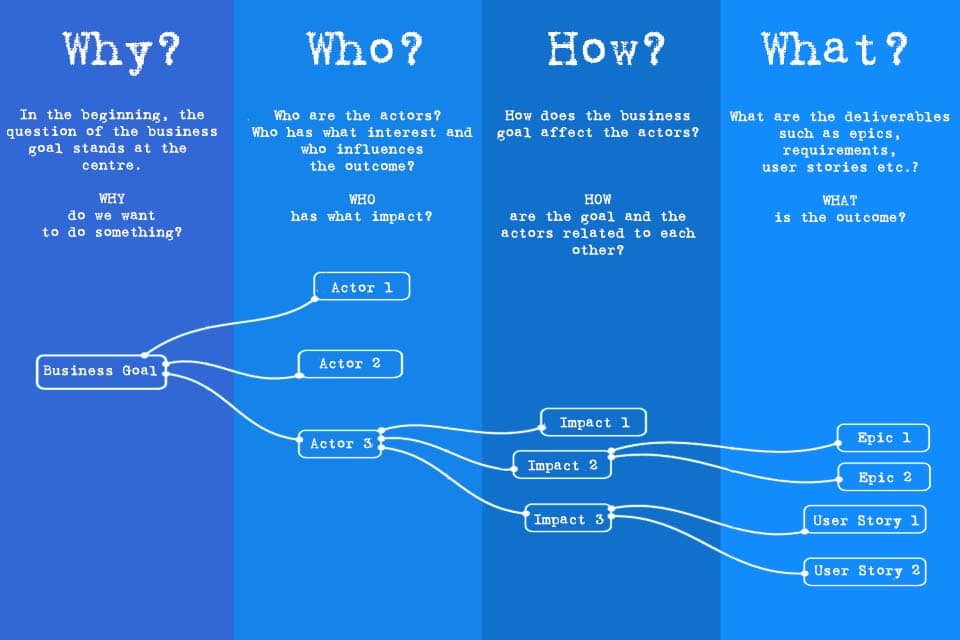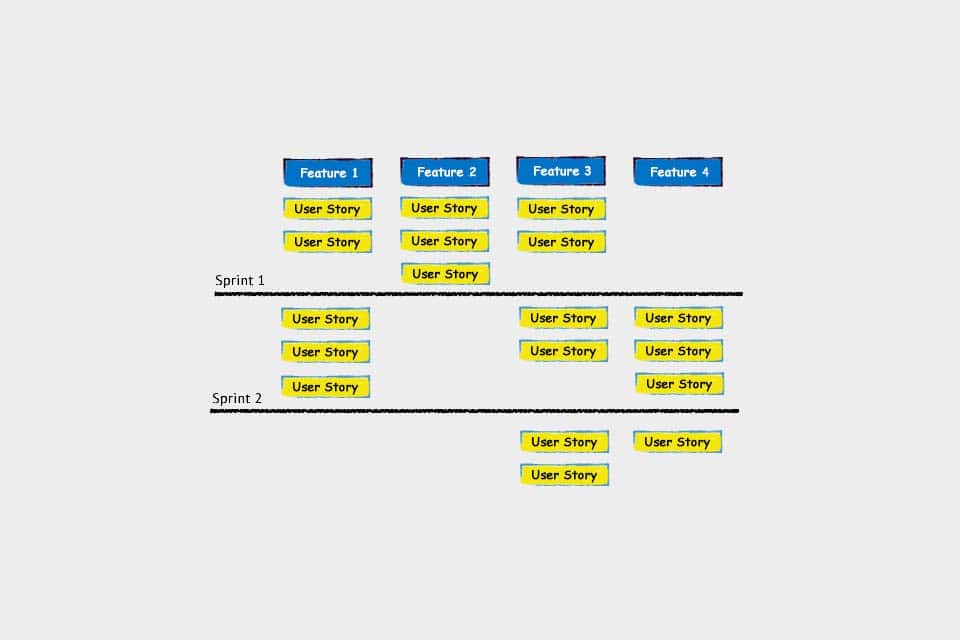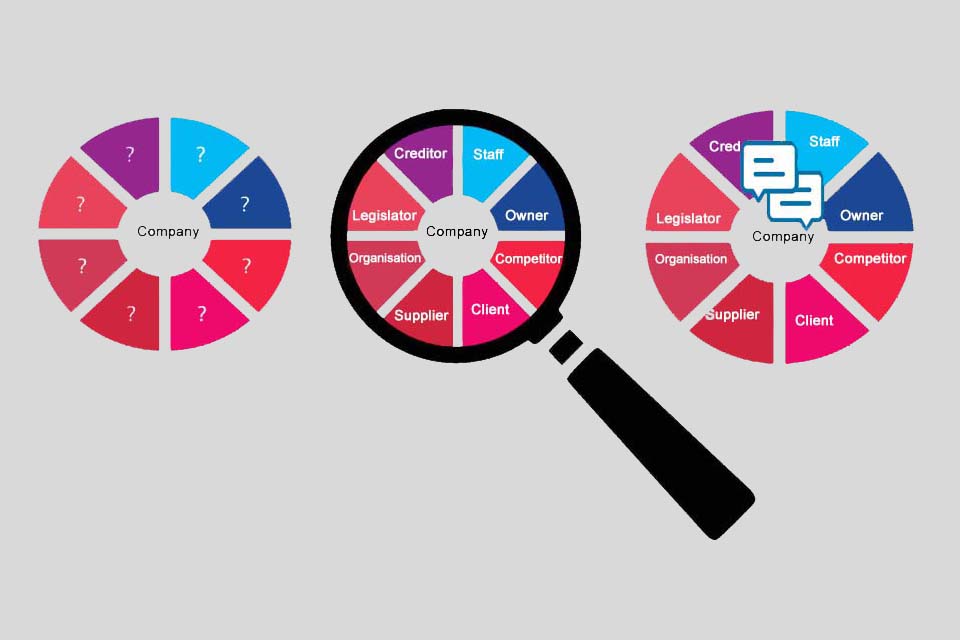What is Impact Mapping?
Table of Contents: Definition – Four Questions – Advantages and Disadvantages – Tips – Notes
Smartpedia: Impact Mapping is a method to align actors and their activities in the course of product or software development to a common business goal.
Impact Mapping – making a difference
Impact Mapping is a method used by organisations during product development to align employees involved in development and their activities with a common business goal. The goal of Impact Mapping is to make better decisions in the course of development through strategic planning and clear communication in order to develop a product or software, or to implement a project that makes an impact.
The method goes back to Gojko Adzic, a software developer from Serbia, and his book “Impact Mapping: Making a Big Impact with Software, Products and Projects”¹ which he published in 2012.
Four questions: Why, who, how and what?
Impact Mapping involves answering four questions and making assumptions in order to jointly discuss them.
These questions have to be answered:
- WHY do we want to do something?
- WHO are the actors?
- HOW are the effects?
- WHAT are the results?
The first thing is to define the business goal: Why should the organisation (want to) do something, what is the need, which problems should be solved? The business goal is therefore the basis for impact mapping.
The next step is to find the actors – the stakeholders – who are interested in the goal: Who benefits from the development, the product or the project? Who is influenced by the product, who is interested in the development, who influences the result and who implements the goals?
he question about the effects address the actual “impacts” and sheds light on the behaviour of the actors who can help to achieve the goals or even prevent them under certain circumstances. If necessary, organisations should also consider how they can change the behaviour of the actors.
The question about the results does not aim at the Impact Map, which is a visualisation of the process, but rather a tool than a result. Results are the activities that are completed, or the epics, user stories, requirements, etc. that need to be implemented to achieve the business goal. So the question addresses so-called deliverables.
Last but not least, the assumptions must be verified. The assumptions are the paths between the answers. Which paths are particularly effective? Which aspects should be prioritised and pursued? In practice, it is advisable to go through the method several times in order to check the assumptions on the one hand or to identify alternative paths from the business goal to the deliverables and back on the other.
Advantages and disadvantages of Impact Mapping
Impact Mapping offers the following advantages, among others:
- The method is easy to understand and use. The terminology and the procedure can be conveyed within a few minutes.
- The Impact Map is an easy to understand tool and a good basis for a joint discussion. All you need is a blackboard, a flipchart or a whiteboard and the exchange can begin.
- The method can be scaled, i.e. it is suitable for individuals as well as for groups or teams. (The more participants take part, the more important it becomes to use a moderator.)
- The method can be supplemented. Other methods such as brainstorming, brainwriting or braindumping can be used to answer the questions.
- The method originates from the context of software development and could be used, for example, to define backlog items. However, it can also be used for other product developments and projects, especially since it does not use any software-specific terminology.
There are the following disadvantages with the application:
- Even if the method is easy to understand, it requires a common understanding of terms, which is often not available in practice in organisations. What, for example, is a objective? How should it be formulated? What happens if there are several goals or objectives?
- The Impact Map visualises the way from the business goal to the results, but priorities cannot be read off in alternative ways.
- The method does not provide any tools for subsequent processing or verification of assumptions and results. For example, which epics are more important than others? What level of abstraction should deliverables have (epics vs. user stories)?
- The method shortens other methods that deal with selected topics in detail. For example, a goal diagram can be used to identify goals, relationships between goals, and relationships between stakeholders and goals. Stakeholder management addresses a company’s targeted, continuous engagement with its stakeholders, including identification, analysis and communication with stakeholders. Shortening this process threatens to lead to false assumptions.
Another criticism of impact analysis is that it is a copy of things and methods that have been around for many years. Simon Sinek, for example, addresses the questions of “Why”, “How” and “What” with the Golden Circle. In 1999 Anthony W. Ulwick published “Jobs to be Done: Theory to Practice”, a work that focuses on the needs of customers and not on the features of a product. This so-called outcome is also sought in Impact Mapping. And Shawn A. Bohner and Robert S. Arnold already published the “Software change impact analysis” in 1997.
Tips for Impact Mapping
Below are some tips on how to use the method:
- Identify what assumptions are behind your impact maps and develop ways to validate or refute those assumptions.
- Strive to define clear and measurable metrics for the desired impacts and behavioural changes. This will allow for an objective assessment of progress and measurement of success.
- Analyse potential risks that could affect the success of your impact maps. What can you do to reduce the likelihood of risk occurrence or the extent of harm?
- Impact mapping should be an iterative process. Conduct regular reviews to update, expand and refine your maps as new insights are gained or business conditions change.
- Use impact maps as a communication tool to engage stakeholders and gain support for a project if necessary. Visual representation can help communicate complex ideas in a more understandable way.
- Experiment with different visualisation techniques to make impact maps more meaningful and engaging. Mind maps, story maps or other creative representations can help to better illustrate complex relationships.
You can also link impact maps to OKR (Objectives and Key Results). OKR is a framework for strategy work and people management with qualitative objectives and measurable results. Linking the two approaches can provide a better connection between strategic goals and tactical activities. Last but not least, you can apply impact mapping in portfolio management to ensure that all projects and initiatives pay off against the organisation’s strategic goals.
Notes:
[1] Impact Mapping: Making a Big Impact with Software Products and Projects
Here you find a blog post about Jobs to be done.
Here you can find more information such as videos, posters and a community.
If you like the article or would like to discuss it, please feel free to share it in your network. And if you have any comments, please do not hesitate to send us a message.
And here you can read additional information from our Smartpedia section:



